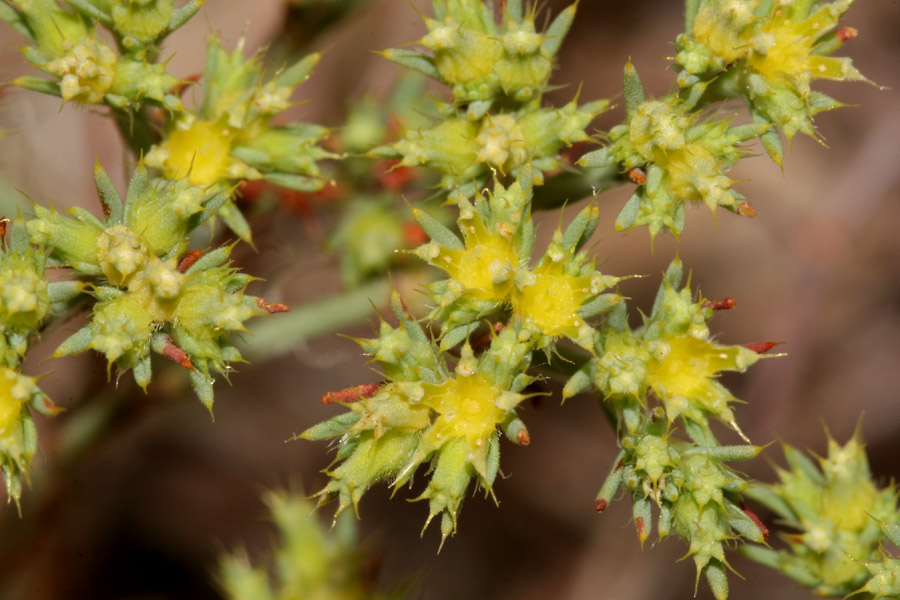|
Family: Caryophyllaceae |
Herbs, annual, biennial, or perennial, sometimes with woody base. Taproots filiform to stout. Stems prostrate, ascending, or erect, simple or branched, terete to angular. Leaves opposite, connate by stipules from adjacent leaves, petiolate (basal) or sessile (cauline); stipules 2 per node, often conspicuous, white or silvery, subulate to lanceolate or ovate, margins entire or fimbriate, apex subobtuse or acute to acuminate, unlobed or sometimes deeply 2-fid; blade 1-veined, linear to elliptic, oblanceolate, or spatulate, sometimes thickened and succulent, apex obtuse or acute to acuminate or spinose. Inflorescences terminal or sometimes axillary, frequently much-branched or congested cymes, or flowers solitary; bracts paired, dimorphic (resembling leaf blades and stipules), often concealing flowers. Pedicels erect in fruit. Flowers bisexual or rarely unisexual, some plants also having staminate unisexual flowers, others also having pistillate unisexual flowers, not woolly, with hairs ± straight or tips coiled, 0.1-0.3 mm; hypanthium cup-shaped, tapering or expanded distally; sepals (3-)5, connate proximally, white or yellowish to green or reddish or purplish brown, subulate to linear-oblong, lanceolate, spatulate, or ovate, 0.4-4.5 mm, margins translucent to white, scarious or papery, apex defined by a usually prominent adaxial hood, ascending to slightly descending, rounded to triangular, sometimes absent (P. americana, P. erecta), apex obtuse or rounded, usually with terminal or subterminal cusp, crest, mucro, or prominent awn (often thickened-conic proximally, spinose distally); nectar secreted from within hypanthium; stamens usually 5; filaments distinct or connate proximally with alternating staminodes; staminodes absent or 5, arising from hypanthium rim, subulate to narrowly triangular, filiform, or oblong; styles 1-2(-3), distinct or often connate proximally 10- 10 of length, subcapitate to filiform, 0.07-3.2 mm, glabrous proximally; stigmas 2(-3), subterminal or linear along adaxial surface of style branches, obscurely papillate (50×). Utricles ovoid to globose or rarely 4-angular, membranous, indehiscent. Seeds brown, subglobose to ellipsoid, laterally compressed, smooth, marginal wing absent, appendage absent; embryo peripheral, curved. x = 7, 8, 9. Fls perfect in loose to dense, evidently bracteate cymes or in the forks of the stem, hypogynous or nearly so; sep distinct or united at base, ±strongly cucullate; pet none; stamens usually 5, inserted at the base of the cal, sometimes alternating with as many minute teeth or setiform staminodes; ovary maturing as an ovoid to globose or obovoid, membranous utricle; style 2-parted; ovule one on a basal placenta; seed smooth, reddish-black; annual or perennial herbs with small, opposite, entire lvs and conspicuous hyaline stipules. (Anychia, Anychiastrum) 40+, cosmop. Gleason, Henry A. & Cronquist, Arthur J. 1991. Manual of vascular plants of northeastern United States and adjacent Canada. lxxv + 910 pp. ©The New York Botanical Garden. All rights reserved. Used by permission. |


